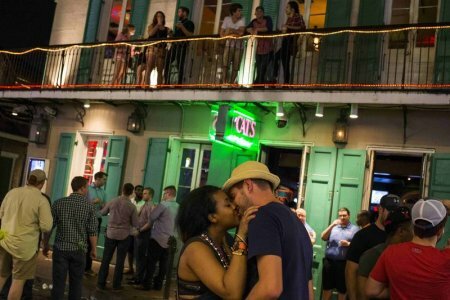After Hurricane Katrina, residents of New Orleans scattered to cities around the country.
MARIETTA – Governments in Cobb County and its six cities prepared to open their doors and their wallets as plane loads of Hurricane Katrina evacuees begin arriving here Thursday through Dobbins Air Reserve Base.
There has been some progress since the storm. “And both those realities are true”. Polluted water up to 20 feet deep flooded 80 percent of the city. Perhaps unsurprisingly, women who had suffered the most in the hurricane or who had experienced the death of a loved one were the most likely to be unhappy a year later. Survivors felt abandoned. The economy shut down. Next Friday, many of those first responders will return.
And people haven’t given up hope that East Biloxi will thrive. Could they thrive? “We had just as much losses as they did, probably, if not more”, said Raquel Sumrall. Most of the dead were in New Orleans.
The government was accused of turning a blind eye before and in the aftermath of the storm because of the city’s large black population.
– A sleek, modern University Medical Center has replaced the public Charity Hospital, where the emergency room served as a first and last resort for overwhelmingly poor black patients without insurance before it was shuttered after the storm. There were few maps that were detailed enough to make an attractive map, and in the end I went with this H*Wind map (NOAA sold their wind modeling software to a private company, H*Wind, after Hurricane Katrina). There are more restaurants.
But that’s not the only factor: Even among the residents who lived in the city before the storm, the racial disparity in responses persists.
Eddie Compass, the previous superintendent of the New Orleans Police Division, Although he cited no particular goal for his departure, many individuals consider that backlash, aimed on the NOPD’s incapability to curtail the looting and chaos that adopted the hurricane, performed an element in his determination to step down. More than one-third were at least a year behind in school, and 7 percent were still homeless. Eighty-year-old Oralee Fields calls it “the wilderness”.
I think the turning point … was when we were able to actually create the capability and capacity to handle the remains that we were finding and deal with them with dignity and make sure that we treated everybody with respect. Failing schools have been all but eliminated.
The massive piles of garbage are gone.
When the floodwaters receded after Katrina and it became clear how long it would take to rebuild after such devastation, there was a fear that we might be forgotten. A protracted debate over whether to abandon the Lower 9th as livable space slowed recovery.
Supporters credit these reforms for the city’s rapid population growth, wealth of new jobs and startups and improving performance of students on standardized tests.
I can’t believe it’s been 10 years since Hurricane Katrina formed and then wreaked havoc on the Gulf Coast just a week later. “We don’t have anyone who seems to know how to fix that problem”, said Wayne Baquet, who owns Lil Dizzy’s Cafe in Treme.
With cheap rentals largely destroyed, rents skyrocketed by 43 percent.
In the Lower 9th, that feeling is punctuated by a single house here, a cluster there. Thousands of families remain on a waiting list for subsidized housing. “You could see that the city really needed it”.
Students at the Encore Academy charter school in New Orleans, in May.
